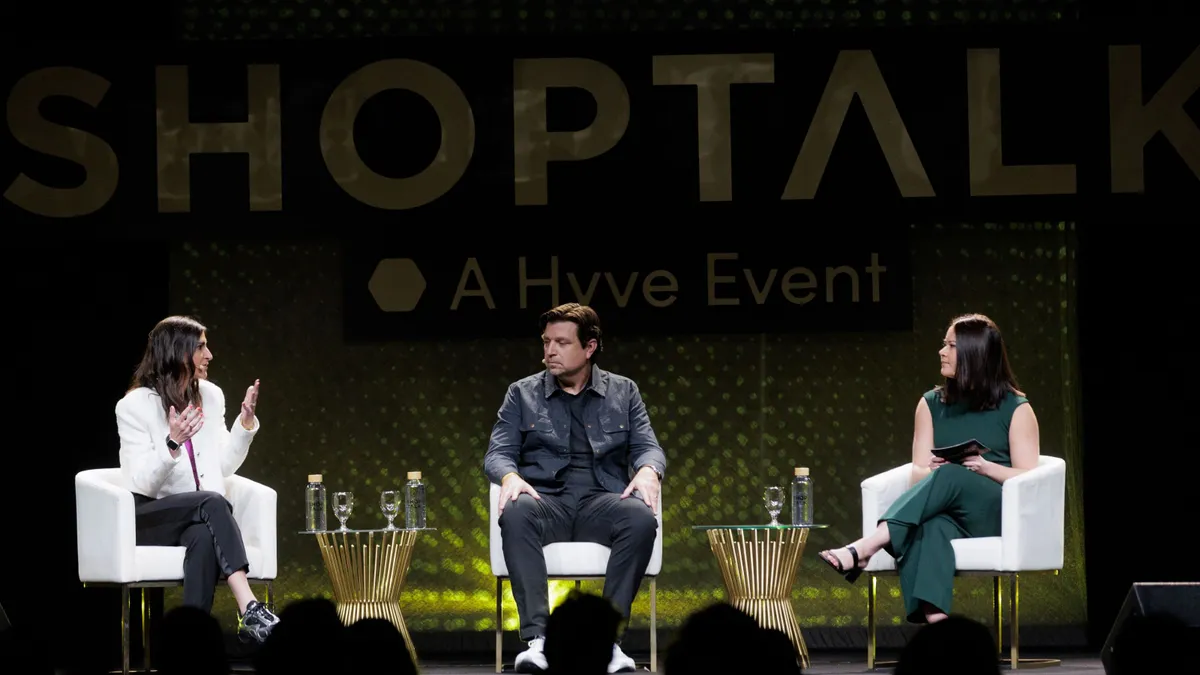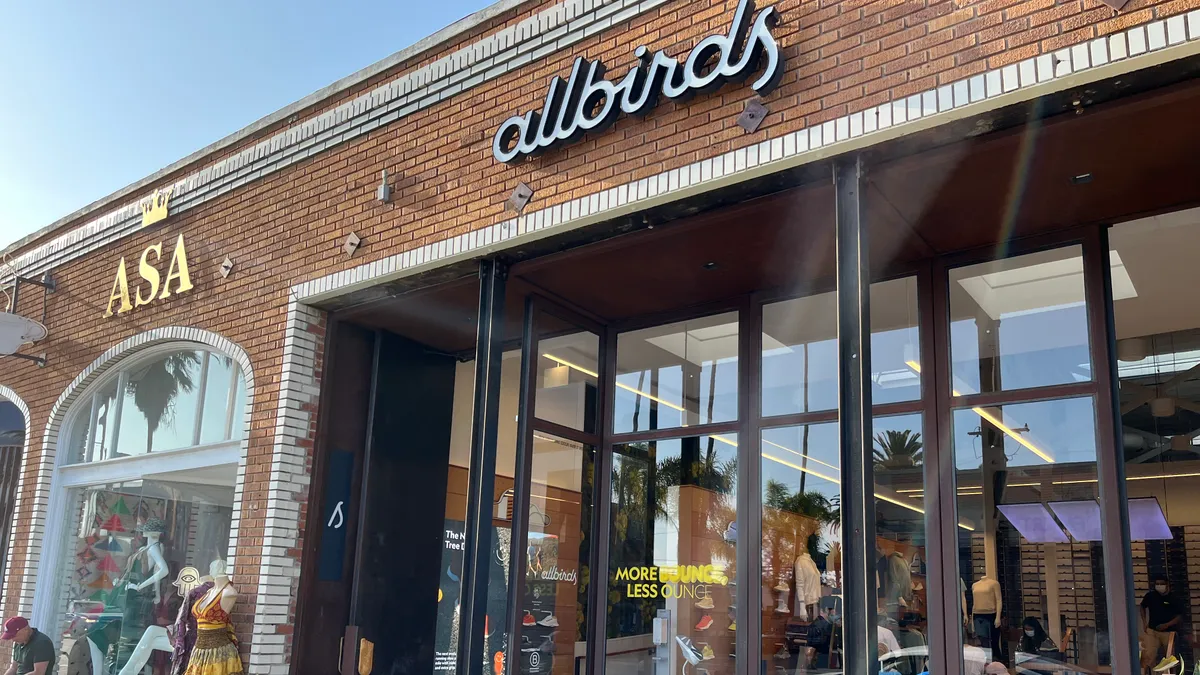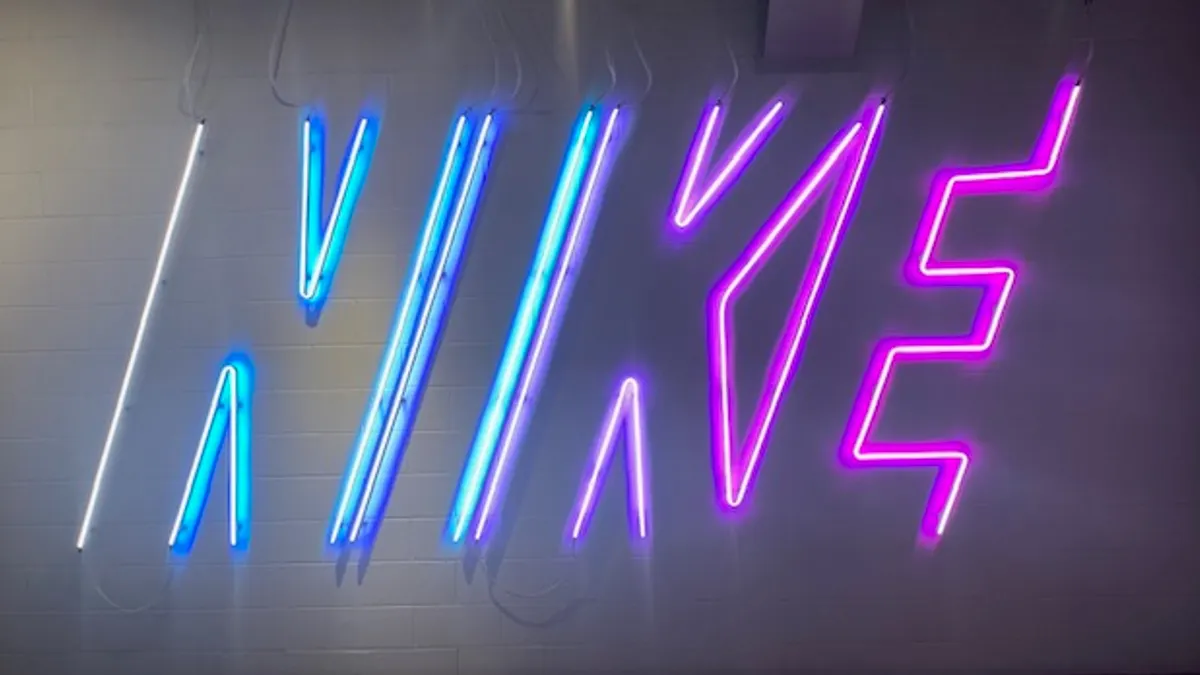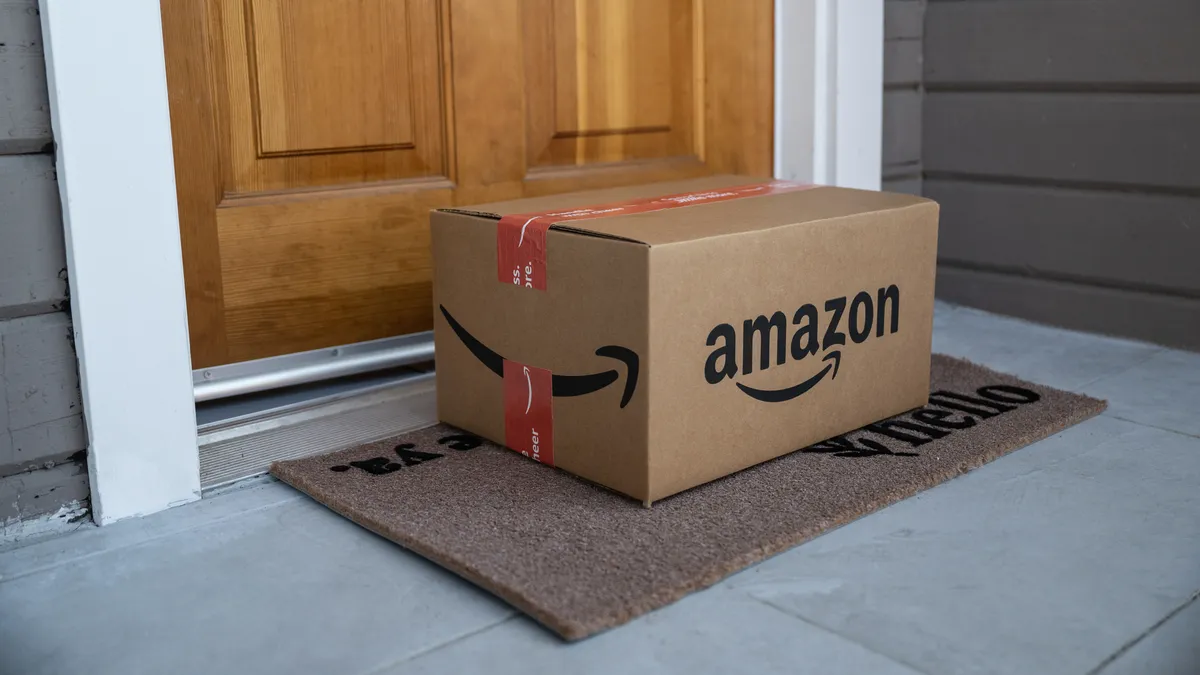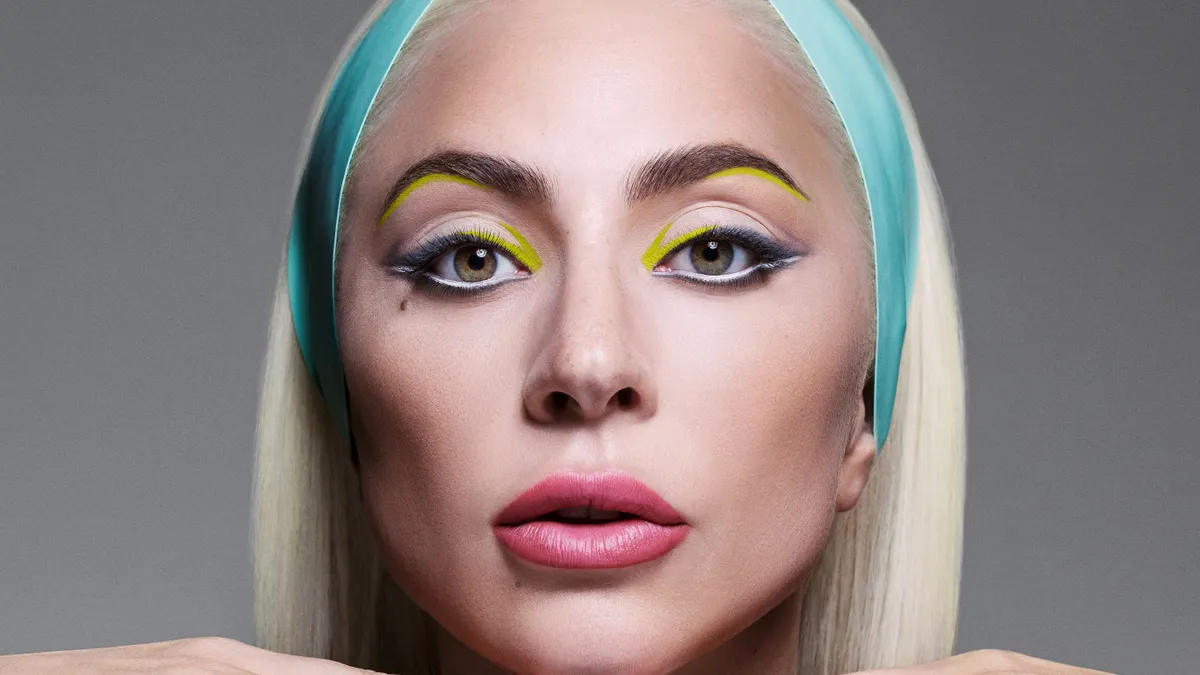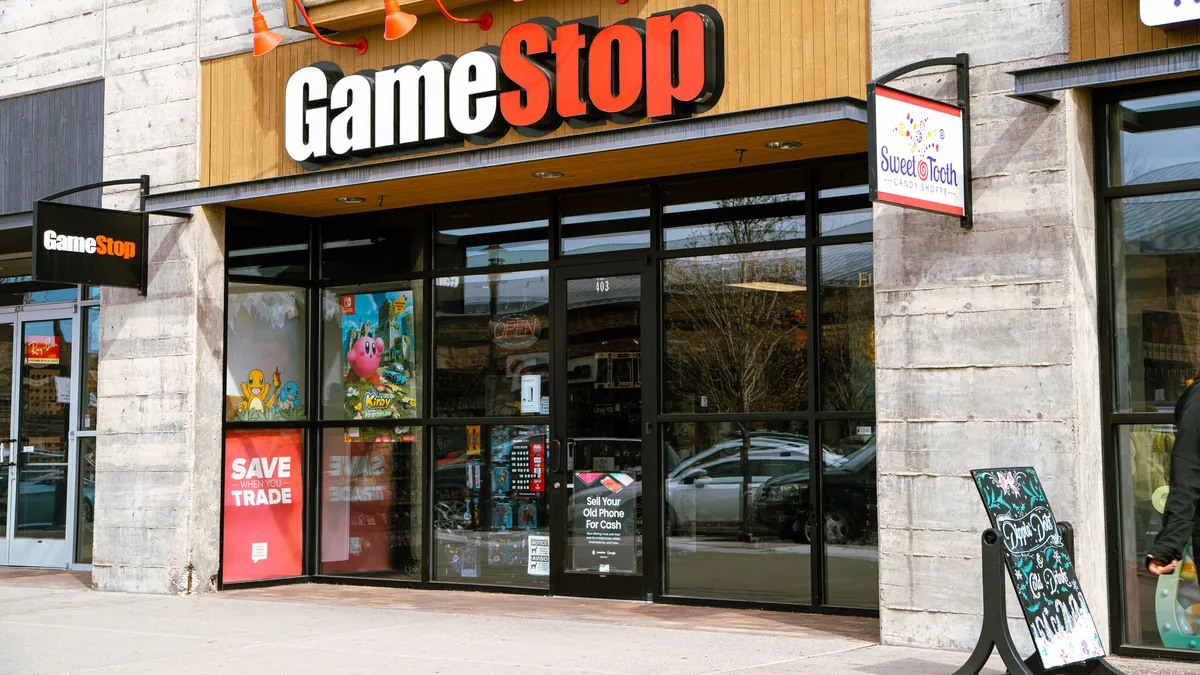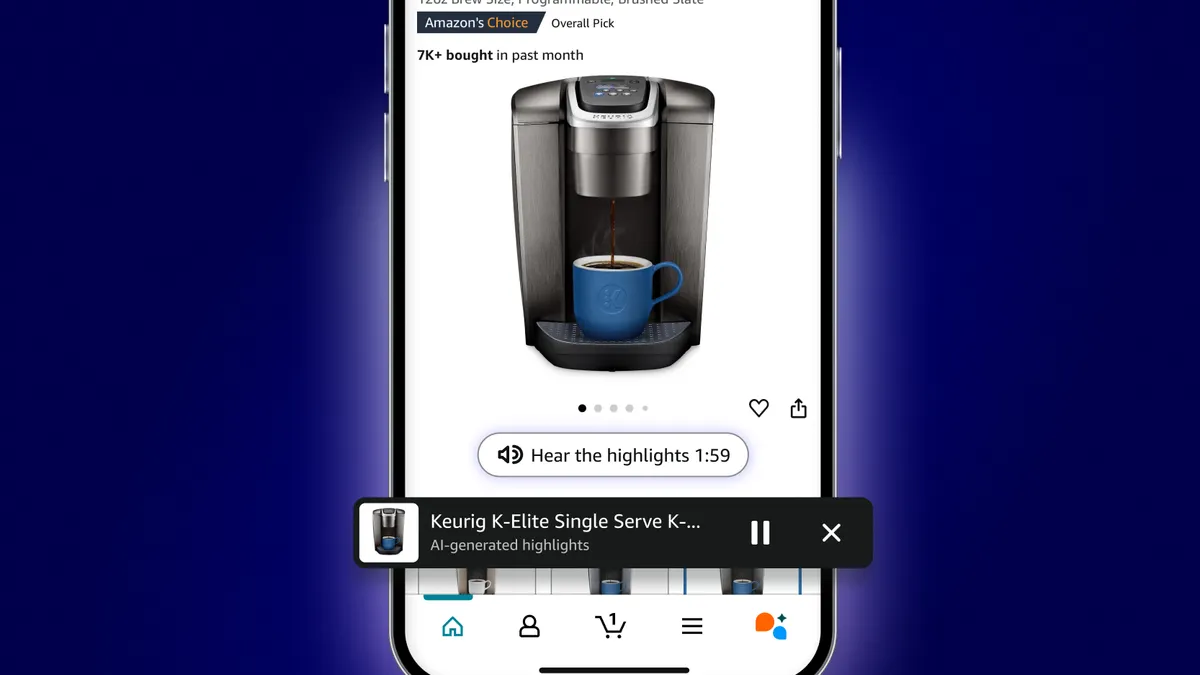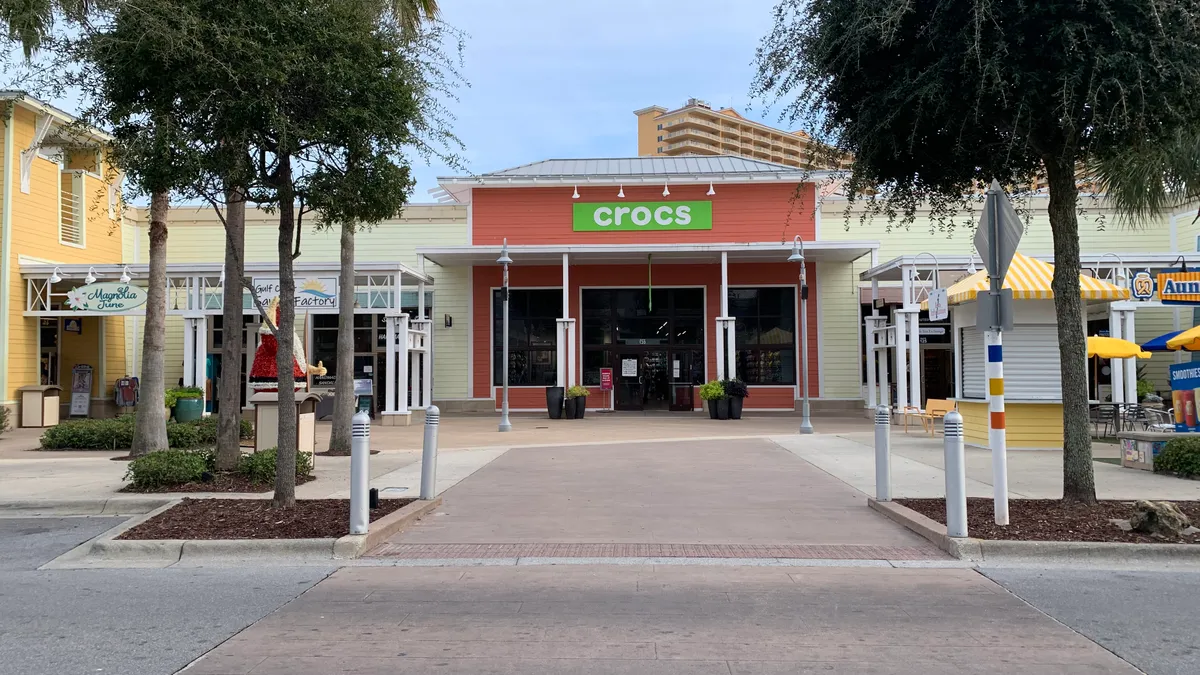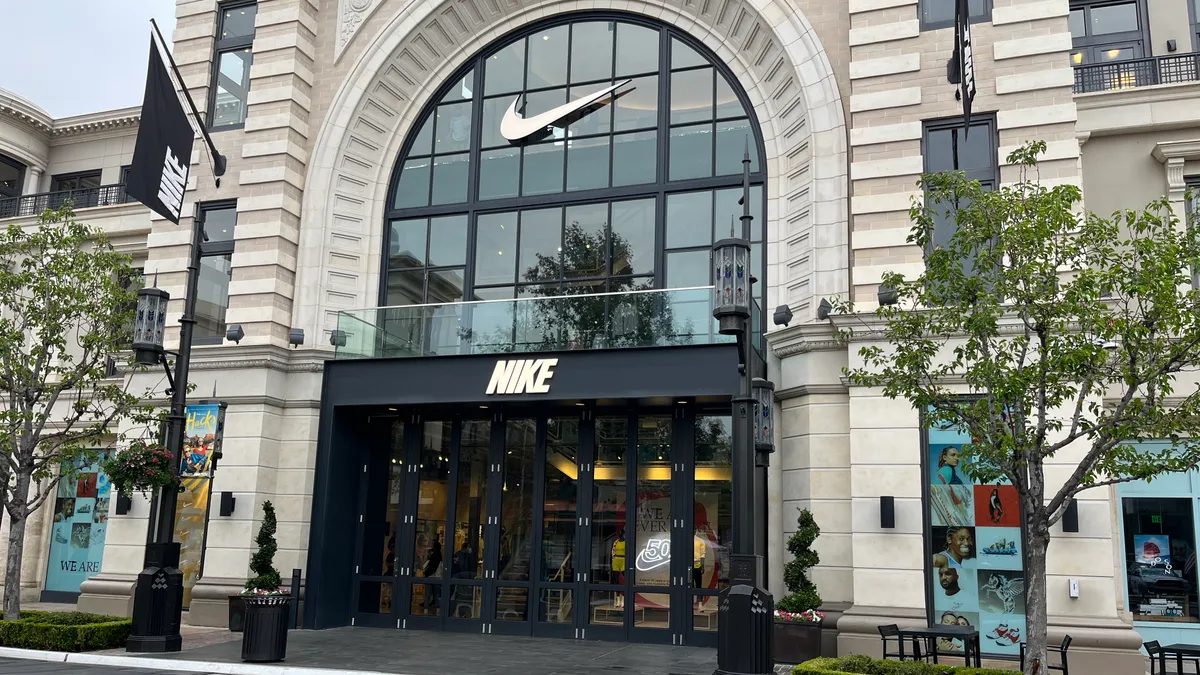While retailers have a vested interest in understanding all of their shopper demographics, the industry’s youngest customers are always a source of fascination, even before they fully come into their spending power. They represent the future retailers need to build toward, and their preferences will shape investments in the industry in a variety of ways.
Although the youngest Gen Zs just entered their teenage years, attention is already turning to their successors, Gen Alpha. The group is still reliant on their parents for money, but they’re already influencing purchase decisions. According to Holden Bale, global chief strategy officer of Merkle, almost 75% of Gen Alpha members are already driving purchase decisions.
“I don't know if you've had a conversation with a child recently,” Bale said during a presentation at Shoptalk Spring, noting that in a recent discussion over where to go for dinner a seven-year-old girl “made all the decisions for me. I had no input.”
While it’s too early to say many things about Gen Alpha, if they follow in Gen Z’s path they’ll likely be digitally savvy and have a penchant for in-store shopping. According to Merkle, 81% of Gen Z prefer shopping in person to online, which is higher than every other generation.
In the wake of the conference, here’s how a few different retailers are thinking through the store experience for some of retail’s youngest shoppers.
Sephora
In the era of Sephora kids, the beauty retailer is well aware of the allure of its stores for young shoppers, even as they’re more digitally aware than ever.
“It's about play,” Celessa Baker, vice president of marketing partnerships for Sephora, said of the company’s stores. “Consumers come in to touch, feel, but what we are noticing is they're on their phones. So they are looking at product on their phone.”
Shoppers are checking out ratings and reviews, looking at influencer and creator content, and consuming that information throughout their shopping journey in stores, Baker said. Meanwhile, store associates are there to give guidance and the retailer hosts events and brand days where different companies can educate consumers on a product. Beauty is a tactile space, which makes stores appealing even as online content flourishes. For Gen Z and Gen Alpha in particular, Sephora “is really their playground.”
“I used to hang out at a mall. It's no different. My daughter wants to hang out in a mall,” Baker said. “Sephora happens to be a trending space right now, so I will take it. You just have to educate the younger consumers on appropriate behavior as they’re in the stores and what that looks like. But I think as long as you are rooted in discovery, in visualization — and you’re a warm and welcoming place, that digital, offline, the content, the storytelling, will ultimately lead to a path to purchase in store.”
Foot Locker
At Foot Locker, appealing to younger generations comes in multiple forms, with Gen Alpha likely shopping its Kids Foot Locker format and older teens graduating to its namesake banner. When it comes to the youngest of shoppers, though, Foot Locker’s approach is two-fold.
For Gen Alpha themselves, Global Chief Customer Officer Kim Waldmann said the retailer has spent a lot of time looking to understand the group, including their fluency with technology. She noted that Gen Alpha is the first truly digitally native generation, in that they were born with more advanced mobile phones, and they therefore start engaging with YouTube videos, product reviews and other such content early on.
“The point is, by the time that kid is going into the mall with his parents, he already knows about product and brands, right? He already has preferences, and so he's really driving the choice in that store environment in a way that maybe kids didn't in the past,” Waldmann said.
She noted that Gen Alpha kids are more independent than their predecessors, so Foot Locker has designed its revamped Kids Foot Locker locations to allow them to drive their own experience and be able to customize products. But as independent as kids are these days, their parents are still footing the bill.
President Frank Bracken said the retailer has thought of them too, with kids’ activity tables in stores so parents can keep them entertained if they’re shopping for multiple children at once. A technology-enabled sizing experience will tell kids not just what size they are, but how much they’ve grown since the last time they came into the store. The retailer’s store associates are educated on different products and brands, and also expect different things based on the location of the store.
“If you're at Aventura Mall, you're getting a broad swath of consumers where, if you're on 49th Street in Philadelphia, a more multicultural sort of urban setting, you know you're going to get more sneaker mavens who are into basketball and sneaker releases,” Bracken said. “Our store teams, our managers, our striper staff are very acute and aware of those things.”
Toys R Us
Toys R Us’ strategy to appeal to the kids of today, and recover its place in the market after a 2017 bankruptcy that erased its store footprint, includes leveraging its IP in the entertainment industry, hosting in-store events and giving Geoffrey the giraffe a birthday.
Taking inspiration from Sesame Street’s Elmo, Geoffrey is perpetually nine and a half years old, but the toy retailer still celebrates his birthday every year. With a presence across 1,500 stores in 34 countries, Kim Miller, global chief marketing officer for toys at Toys R Us parent WHP Global, says the mascot’s birthday has become “an international holiday.”
Celebrated on Oct. 17, Geoffrey’s birthday has drawn participation from brand partners including Mattel. Toys R Us has also built the giraffe a 1.1 million-strong following on TikTok and has a photo opp with Geoffrey on a bench in every store. Those moves help the brand stay young, despite its growing age.
“You don't want a grumpy 50-year-old giraffe as your mascot down the road,” Miller said, noting that the relationship between fans and Geoffrey is still strong, even for adults who remember the mascot from their childhoods. “We've been to Comic-Con and had 35-year-old men cry when they hug Geoffrey the giraffe, remembering their experience as kids.”
Toys R Us is tapping further into the adult demographic through partnerships with entertainment franchises like Golden Girls, among others, and is hoping to connect with both adults and children via an upcoming movie and in-store events. As to the latter, Miller touted special play days that include local DJs, parades leading up to the storefront and a theme surrounding some form of play, like a Hasbro-run game day or a make-believe day.
“It's bringing that experience to the stores, to the actual physical retail today — and that's the distinguisher between just going on Amazon and typing something in and actually really trying to feel the magic,” Miller said.
Coach
Appealing to U.S. Gen Zers has required a feat of repositioning at Coach, which just three years ago was being perceived as “their mother’s brand,” according to Giovanni Zaccariello, senior vice president of global visual experience. That perception led Coach to lean into “expressive luxury,” a strategy focused on meeting Gen Z shoppers differently.
“Now, they actually think we are their brand after a few years of transformation,” Zaccariello said.
Coach has experimented with its store experience to better align with what Gen Z is looking for, which includes more experiential retail and deeper connections with the brands they shop. One example of that, a concept called Coach Play, which has 12 different locations, is localized to the city it operates in and created based on interviews with store managers and other efforts to understand the local consumer. Zaccariello stressed that trusting regional teams is crucial to the success of these locations.
“Each of them are incredibly bespoke, which means more work, also incredibly local. We don't only speak to the city, but we speak to the neighborhood. Those locations are laboratories for Coach and what we learn in those 12 locations we then roll out around the world,” Zaccariello said. “So, for example, the first Coach coffee shop actually was introduced in our Coach Play location in Singapore three years ago. Now, we have a rollout plan so you can see how the laboratory and testing and learning kind of works.”
Product customization is also big at these locations, with shoppers able to make cosmetic changes to their Tabby handbags that are removable — a selling point for young shoppers in particular.
“It's not a permanent customization,” Zaccariello said, saying much can be done with charms, handbag straps and stickers. “You want to buy that beautiful Tabby bag and you want to wear it in the evening, at night, for the weekend — so you don't want to put something on top of it and then you cannot wear it anymore, right? Because for a Gen Z, that might be the only bag they can afford.”
Even the layout of these locations is tailored to Gen Z’s preferences — and Coach considers it a win even if Gen Z shoppers aren’t buying anything. Zaccariello noted that one key performance indicator is simply how many Gen Z shoppers are crossing a store’s lease line, and another is how much time they spend there, whether that leads to a purchase or not.
“We will not start a brief without KPIs. So I will personally not design anything unless I know, what does success look like?” Zaccariello said. “Is this for brand building? Is this for traffic driving? Like, how do we know if this is successful?”
American Girl
American Girl is proof that a toy retailer can sell much more than just a doll, while still undeniably being a doll company. The ’80s-era retailer, which opened its first store in 1998, does nail painting, ear piercing and hair styling for children and their chosen doll, and allows them to have tea or lunch with their 18-inch friends at in-store cafes.
In fact, the salon and cafe experiences are so popular that shoppers “have to reserve well in advance” and often call in to say they couldn’t get a spot at a certain time, Jamie Cygielman, general manager and president of American Girl at toy manufacturer Mattel, said. While technology might be present to assist with the experience, like choosing a hairstyle from an iPad or exploring YouTube content throughout the store, American Girl’s selling points are very much in the physical world.
“It was designed to create a place to celebrate girlhood,” Cygielman said of the retailer’s first store in Chicago.
Now, a generation later, Gen Z and millennials still come back to the stores to bask in nostalgia or guide their own kids through the experience, according to Cygielman.
“We see a lot of original Samantha dolls in the store,” Cygielman said, referencing one of American Girl’s first dolls. “It's the one item that everybody saves and passes down to the next generation or holds for themselves. And so it's really important to make sure that we are still leaning into the legacy — what made this brand so special, the storytelling, the original heroines that were based on different moments in American history. But then also to speak to the child, we've got to bring forward new stories and technology and new ways of giving that storytelling.”
That means evolving from American Girl print books to also offer a YouTube series, gaming options and more storytelling geared toward a digital generation. There’s also now a build-your-own-doll program on American Girl’s website that allows for 1,000 different permutations. Originally, the option was offered in stores as well, but shoppers were avoiding it because they wanted the benefit of walking out with their doll that day.
The solution for stores, developed later, is called “style guide” and lets kids choose a doll from a whole wall of different options and customize the doll’s clothes, accessories and other things from there. They can choose a pet for the doll, write a background up for the doll and take a selfie at the end of the experience with their new purchase.



